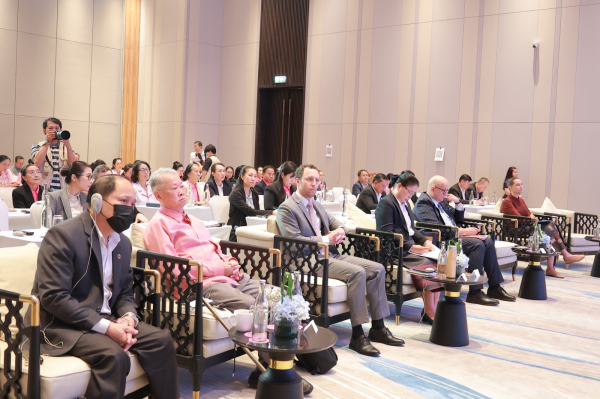KPL
Lao PDR marked the International Day of the Midwife on June 18 with renewed commitment to maternal and newborn health. The event in Vientiane brought together government officials, health workers, and development partners.

(KPL) Lao PDR marked the International Day of the Midwife on June 18 with renewed commitment to maternal and newborn health. The event in Vientiane brought together government officials, health workers, and development partners.
The Ministry of Health, the Lao Association of Midwives, UNFPA, UNICEF, WHO, and other partners organized the event. It celebrated the courage and role of midwives, especially in rural and remote communities.
Lao PDR has made major progress. Maternal deaths fell from 579 per 100,000 live births in 2000 to 112 in 2023 — an 80% drop. Midwives have played a key part in this success.
One example is Beng Seanmeung, a 22-year-old midwife from Saravan. She joined the profession after seeing a neighbor nearly die during childbirth. With support from a UNFPA scholarship, she became one of 93 ethnic midwives trained since 2010.
“Midwives are the backbone of our maternal health system,” said Deputy Minister of Health Ms. Aphone Visathep. She confirmed the government’s goal: at least one trained midwife in every health facility by 2030, especially in ethnic areas.
Mr. Thomas Lammar, Chargé d'Affaires at the Embassy of Luxembourg, praised Laos’ efforts. He said Luxembourg is proud to support midwifery education and frontline health workers. “Midwives help build strong, inclusive health systems,” he added.

The event included drama shows by students, personal stories, and updates on Laos’ progress toward Family Planning 2030 (FP2030). It also previewed the new Midwifery Action Plan 2025–2035.
UNFPA Deputy Regional Director Dr. Alexandar Sasha Bodiroza said, “Midwives do more than deliver babies. They bring dignity, knowledge, and health rights.” He stressed the need for continued investment to reach the 2030 goals.
Ms. Sengmany Khambounheuang, President of the Lao Association of Midwives, said many midwives work in hard conditions — long distances, poor roads, and low resources. “They meet these challenges with courage and compassion,” she said.
The new Midwifery Action Plan includes five key areas: education, regulation, workforce development, supportive environments, and community engagement. Three Lao midwifery schools recently received international accreditation — a first in Asia-Pacific.
UNICEF Representative Mr. Bilal Aurang Zeb Durrani highlighted the importance of the first 1,000 days of a child’s life. “A skilled midwife supports not just the birth but a child’s entire future,” he said. He called for maternal health to remain a top priority, even during funding cuts.
Dr. Timothy Armstrong, WHO Representative in Laos, noted that while progress has been made, maternal deaths in Laos are still high. “Midwives are vital to reducing this. We must support them and strengthen the wider health system,” he said.
A new global guide on Midwifery Models of Care, developed by WHO, UNFPA, UNICEF, and the International Confederation of Midwives, was also launched. It encourages systems to put midwives at the center of maternal care.
Despite the progress, challenges remain. Many women still lack access to care due to distance, traditions, and staff shortages. Today’s event was a call to action: more support is needed to ensure no woman is left behind.
KPL